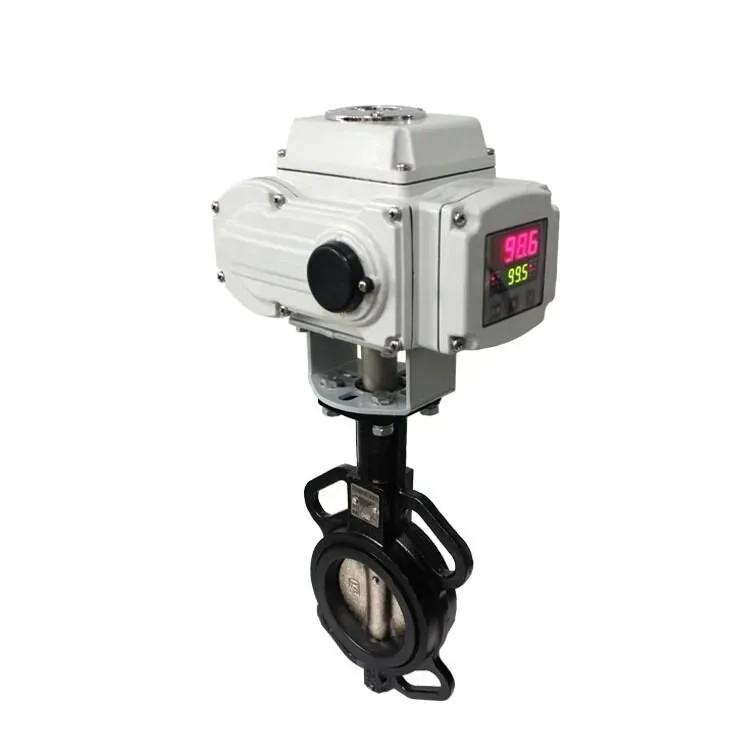Notifications

7 minutes, 2 seconds
-14 Views 0 Comments 0 Likes 0 Reviews

Understanding Electric Butterfly Control Valves
An Electric Butterfly Control Valve is a highly efficient flow control device widely used in large-scale piping systems to regulate the movement of fluids, gases, or slurries. This China Control Valve features a circular disc or plate that pivots at right angles to the flow direction within the pipeline. As the disc rotates around its spindle, it opens or closes, controlling the flow of the medium through the pipe.
The term "butterfly" refers to the valve’s disc, which resembles butterfly wings when partially open. The "electric" aspect signifies the incorporation of an electric actuator that automates the valve’s operation. This actuator allows precise programming to respond to signals from a control system, enabling efficient and continuous flow regulation without manual intervention.
Due to their compact design and ability to handle various media, electric butterfly control valves are commonly used in industries such as water treatment, HVAC systems, power generation, and oil and gas. These valves are particularly beneficial for space-constrained applications and are known for their reliable sealing, low maintenance requirements, and accurate flow control.
The electric butterfly control valve consists of two main components: the butterfly valve and the electric actuator. Together, they provide an efficient solution for regulating the flow of different fluids, including water, air, and chemicals.
The working mechanism involves a disc-like structure mounted on a valve shaft. When fully closed, the disc is positioned at a right angle to the pipeline’s flow, blocking passage. When opened, the disc rotates around its central axis, allowing fluid to pass through. This operation is effective for both on-off and modulating control applications.
The electric actuator drives this rotation by converting electrical energy into mechanical movement. When activated, the actuator moves the valve stem, rotating the butterfly plate from fully open (0 degrees) to fully closed (90 degrees), depending on the desired flow rate. The actuator is controlled via signals from a centralized system, enabling real-time adjustments to flow and pressure.
The automation capability of electric actuators significantly enhances efficiency and precision. These actuators can be controlled through inputs such as temperature sensors, pressure sensors, or remote manual operation. Electric butterfly control valves can be designed for simple open/close functionality or advanced modulating control to allow variable flow rates.
Electric butterfly control valves provide precise flow regulation, essential for processes requiring stable and continuous fluid or gas movement under varying conditions. Their electronic modulation ensures accurate control over flow rates.
The compact structure of butterfly valves makes them ideal for applications where space is limited. Despite their small size, they deliver high-performance flow regulation without compromising efficiency.
Electric butterfly valves are highly durable and require little maintenance. Unlike traditional mechanical valves, they do not need frequent lubrication or manual adjustments. This reduces maintenance costs and extends the valve’s service life.
With electric actuators, these valves can be automated and remotely operated via a central control system. This automation minimizes human intervention, enhances precision, and ensures smooth system operation in response to changing conditions.
Electric butterfly valves are used across various industries, including water treatment, HVAC, oil and gas, power generation, and chemical processing. They can handle different media, such as water, air, and oil, making them highly adaptable.
Electric butterfly valves regulate water flow in treatment plants and distribution networks. Their precision ensures optimal filtration, purification, and consistent water pressure.
These valves control the movement of crude oil, natural gas, and refined petroleum products in pipelines. Their robust design ensures reliable operation under demanding conditions.
In heating, ventilation, and air conditioning (HVAC) systems, electric butterfly valves control airflow and water circulation. Their automated operation improves energy efficiency and maintains stable climate conditions.
Electric butterfly valves manage the flow of steam, water, and other fluids in power plants. Their precise control ensures efficient and safe operation in boilers, turbines, and cooling systems.
These valves regulate the movement of liquids and gases in chemical processing and pharmaceutical manufacturing. Their tight sealing capabilities make them ideal for handling hazardous materials.
Electric butterfly control valves are essential components in modern flow control systems, offering efficiency, automation, and adaptability. Their combination of mechanical simplicity and electronic precision provides a reliable solution for regulating fluids and gases in large-scale industrial applications.
The integration of electric actuators enhances automation, reduces operational costs, and improves accuracy. Whether used in water treatment, oil and gas, HVAC, power generation, or chemical industries, these valves ensure optimal performance under diverse conditions.
As industries move toward smarter and more automated solutions, electric butterfly valves will continue to be a cornerstone of fluid control technology, delivering high efficiency, reliability, and cost-effectiveness for years to come.Know more about Google SEO Directory

